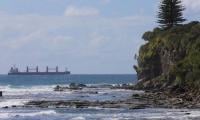SUKKUR: A senior environmentalist of the World Bank, Takeaki Sato, visited the site of Indus Dolphin at upstream of Sukkur Barrage on Thursday. Dr Ali Asar Mahisar, deputy director environment, SBIP, Abdul Basit Khan, deputy director environment, Project Coordination Monitoring Unit, Government of Sindh, Iftikhar Ahmed Arain, divisional forest officer, Sukkur, Adnan, deputy conservator of Sindh Wildlife department, accompanied the World Bank environmental safeguard mission. During his visit to Indus Dolphin site at upstream of Sukkur Barrage, Takeaki Sato said that there were many threats to the survival of Indus Dolphin from the construction operations of barrages, mortality in irrigation canals, depletion of prey base, fishing, pollution and poaching. He further said with the construction of barrages over Indus River, dolphins were compartmentalized.
However, the shortage of water between compartments also pushed dolphins to move in deep water between Guddu and Sukkur barrages. He said that based on the historically pattern of decline, the Indus Dolphin population was most likely to decline or disappear with low river discharge, particularly between the Sukkur and Kotri barrages in Sindh.
Furthermore, he said that dolphins may remain in deeper portion of canal until annual closures but when the water level reduces, dolphin mortality rate will increase unless these dolphins are rescued.















